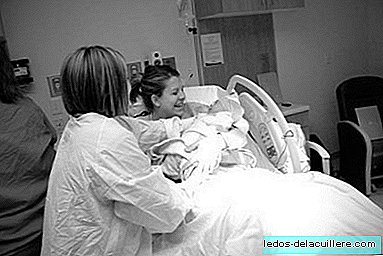
As the World Health Organization has been saying for years, many things have to be changed in childbirths in the world. In general, there is an overmedicalization of births, we often talk about it in the blog. But, What are the most frequent unnecessary medical interventions in deliveries?
Childbirth is an event that lends itself to overmedicalization, from the moment that doctors began to take care of births and women and their families are willing to follow their advice when they recommend interventions presented as important for the life of the Mother and child.
Undoubtedly, many medical procedures save lives and are accurate, but unnecessary interventions can cause damage and expenses for free, and can have serious consequences. In particular, in deliveries, four interventions are abused: caesarean section, episiotomy, artificial rupture of membranes and the application of oxytocin.
Unnecessary caesarean sections
The cesarean delivery rate is increasing worldwide, an intervention that involves dangers and is justified in certain cases, when it saves lives, such as in case of obstructed labor or other indications. But it carries risks and can cause morbidity in itself, apart from generating very high expenses.
The high rate of cesarean deliveries seems to have spread throughout the world. With the exception of the African Region, this rate in urban areas of most countries far exceeds 10%, and in rural areas it is also increasing. This means that in many countries most of these interventions are carried out for reasons that are not medical and without clear health benefits.
In many rich countries these unnecessary interventions carry few risks, but in other places the chances of causing negative consequences for the infant and the mother are very real. In addition, resorting to caesarean section when it is not necessary can lead to a deviation from the scarce resources available in places where many women have no option for a caesarean section when their lives are in danger.
Unnecessary episiotomies
The episiotomy is the surgical cut or incision made in the area of the perineum of the woman with which it is possible to expand the birth canal in the outermost area to get the baby to leave earlier. This intervention is practiced systematically without solid evidence to protect the perineum, and is associated with an increased risk of HIV transmission, perineal trauma and tears and dyspareunia.
WHO recommends episiotomy rates of between 10% and 20%, however we observe that, for example in Europe, these rates are widely exceeded in most countries, even reaching 80% in Spain.

Artificial rupture of membranes
There is also no scientific evidence that artificial rupture of membranes or early amniotomy Routinely be useful in women where labor evolves normally; instead, it increases the risk of fetal distress and HIV transmission.
There are studies that advise against a policy of systematic practice of amniotomy to shorten the duration of labor in primigrávidas or multiparas. On the contrary, they suggest that amniotomy may increase the need for other interventions such as caesarean section.
Artificial Oxytocin
There is also excessive use of artificial oxytocin in births. Oxytocin makes contractions more frequent and more intense. Used to induce labor and to accelerate dilation.
According to the WHO, oxytocin has beneficial effects in very precise indications, determined by monitoring labor with the childbirth. It is useful in the third phase of labor to reduce postpartum hemorrhage. But its routine use is not justified.
The use of oxytocin is increasingly common in places where medical supervision during childbirth is minimal and childbirths are not used or even unknown. In some parts of India, Mali, Nepal and Senegal, a third of women receive oxytocin during delivery. The abuse of oxytocin, especially when there is no medical supervision, can cause fetal distress, stillbirth, uterine rupture and death of the mother.
In short, I observe that between the births of my two daughters these four most frequent unnecessary interventions in childbirth, which gives a lot to think about, especially when checking that I am not an isolated case. The fact that overmedicalization of births is reaching less favored countries is also worrying.












